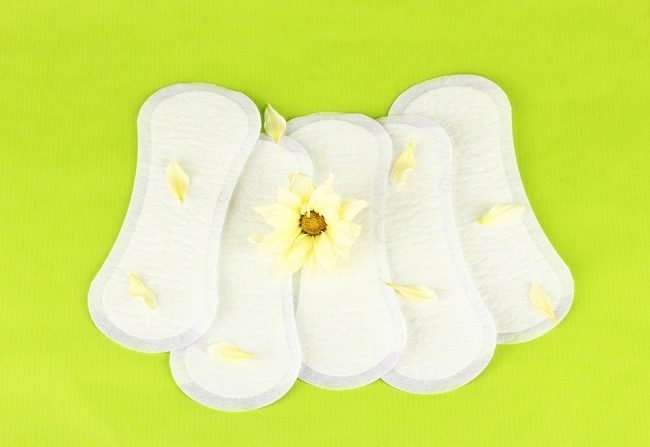Communication between the patient and the plastic surgeon before performing a nose job, plays an important role in equalizing perceptions and expectations of the desired end result. Good communication too couldprevent complications after rhinoplasty.
Nose surgery or in the medical world is known as rhinoplasty is any surgery performed on the nose area, not just a surgery to sharpen the nose which is popular among the public.

This article will discuss the preparation, procedure, treatment, and complications of nose surgery. But it's a good idea to know first the various types of rhinoplasty.
Types of Nose Surgery
One of the goals of someone undergoing rhinoplasty is to beautify their appearance and increase self-confidence. Some actions that can be taken to beautify your nose are:
- nose jobAn operation performed to increase the height of the bridge of the nose by inserting solid silicone or cartilage into the nose. Rhinoplasty in Indonesia is synonymous with this nose sharpening operation.
- Surgery to reduce the height of the bridge of the nose (nose reduction)Surgery to reduce the height of the bridge of the nose is done by chiseling (reducing) excess bone or protruding bone.
- Nose surgerySurgery that aims to change the shape of the nostrils to be narrower (smaller) or wider (larger).
- Top of nose surgery (nasal tip)This type of surgery will change the shape of the top of the nose.
Apart from aesthetic reasons, rhinoplasty can also be performed after a nose injury or in certain diseases, such as a tumor in the nose, to restore the shape of the nose and improve its function. This type of rhinoplasty is called nasal reconstruction surgery.
Preparation for a Nose Job
During the initial consultation, you will be asked what the desired nose shape is after the operation. After that, the doctor will evaluate the structure of your nose and face, and explain what factors can affect the operation, both the type of procedure and the results. These factors include the shape of the bone and cartilage of the nose, facial shape, thickness of the skin around the nose, age, smoking habits, and patient expectations.
After an agreement is reached regarding the expected results, the doctor will take photos from various positions, namely from the front position showing the entire face, the side position at 45 degrees, the side position at 90 degrees, and the head tilted upwards.
Be sure to tell your doctor if you have had rhinoplasty or have had an injury to the nose area before, even if it was several years ago. You also need to tell your doctor if you are allergic to certain medications.
Nose Surgery
For nose surgery, plastic surgeons have two incision techniques. The first is a closed incision, which is an incision made on the inside of the nostril so that the surgical scars are not visible from the outside. Then the second is an open incision, which is an incision made on the part of the nose that is visible from the outside, but in a position that is not easily visible and the end result will be disguised.
The rhinoplasty is performed as follows:
- The patient lies in a supine position and the operated area will be sterilized with a special solution to be free from germs.
- Then a sterile cloth will be placed with a hole in the middle. The hole in the fabric will be occupied by the nose and the rest can cover the entire face, which may make you a little uncomfortable. Even if it is uncomfortable, you are not advised to touch it, just tell the doctor how you feel.
- The doctor will begin to draw an incision design in the nose area using special ink.
- After that, an anesthetic will be injected which also has the effect of reducing bleeding.
- Usually the operation is performed under local anesthesia, but in patients who cannot stand the pain during injection or are afraid, general anesthesia will be given, so that the patient will be unconscious when the operation is performed. When you select general anesthesia, the anesthesia process will be carried out from the start of the action. If you choose a local anesthetic, the doctor will do a pain test before starting to cut the surgical area according to the design.
- After the incision, the doctor will make a cavity in the bridge of the nose, precisely between the skin and the nasal bone, as a place to insert a silicone implant. In addition to silicone, can also be inserted cartilage taken from behind the ear.
- Once the implant occupies the cavity, the surgical incision will be sutured again. A cross-shaped patch will also be placed on the bridge of the nose, which will prevent the implant from moving.
After the operation is complete, you just have to wait for the results of this nose sharpening process.
Treatment After Nose Job
After the effects of the anesthetic wear off, you will feel pain. This pain will gradually disappear within one week after surgery. In addition to pain, you will also find it difficult to breathe through your nose. This complaint usually occurs due to blood clots that form during surgery, and will disappear within 1-2 weeks.
You will also experience swelling and bruising around the surgery area, including the lower eyelid. This swelling will reach its peak on the second or third day after surgery, and will disappear within 2-3 weeks.
To help the healing process, you are advised to do the following:
- Apply a cold compress to the swollen area.
- Wash your face with a non-irritating soap, such as baby soap.
- Do not exercise for at least 2-3 weeks, because exercise has the potential to increase your blood pressure.
- Avoid touch, pressure, especially impact on the nose area, for at least 8 weeks.
- Avoid sun exposure, and use a sunscreen with an SPF of at least 30 when traveling.
- Avoid smoking, drinking alcoholic beverages, and taking blood-thinning medications such as aspirin.
- Avoid blowing your nose for 1 week after surgery.
Complications of a Nose Job
Ideally, the nose will look better within 2-3 weeks, and the final result will be 6 months to 1 year after surgery. Although rare, during the recovery process, patients are at risk for the following conditions:
- Infection on operation wound. To prevent this, as much as possible avoid touching the operated area, in the first 5 days.
- k tastefree permanent one.This condition occurs due to an injured nerve.
- Scar tissue or scars form after surgery.
- The formation of a hole in the bulkhead betweena nostril.
In addition to complications of a medical nature, there are also psychological effects due to nose surgery. This is due to the different treatment you might get from other people, or the nose shape that you desire doesn't match your face. Therefore, first discuss your expectations with a plastic surgeon, before you decide to undergo a nose job. This is necessary, so that the end result is in accordance with the initial goal, namely improving appearance and increasing self-confidence.
Written by:
dr. Nova Primadina, SpBE-RE (Plastic Surgeon Specialist)









